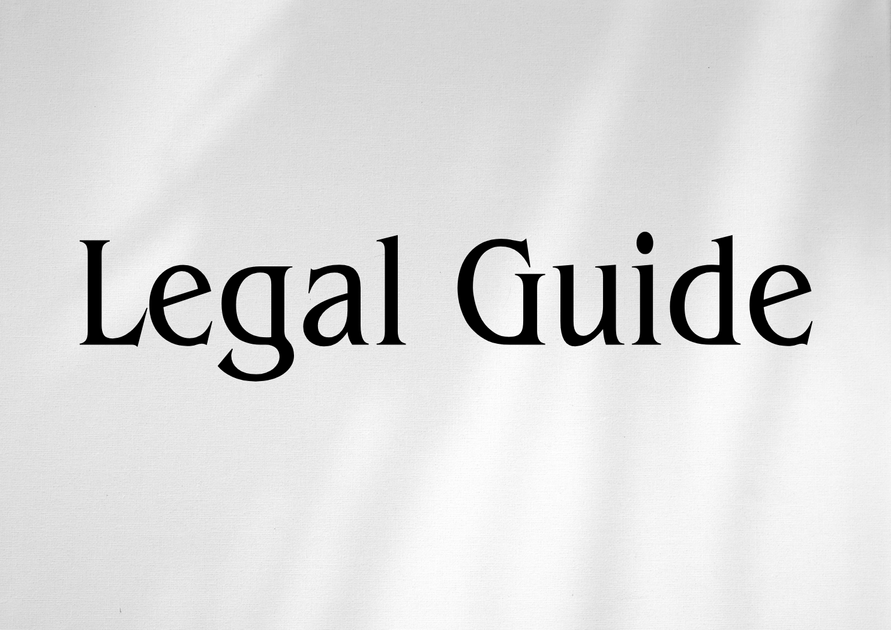Introduction
The rapid ascent of the United Arab Emirates as a major global aviation hub has underscored the need for comprehensive and robust aviation security measures. In 2025, fresh legal developments, reinforced by new federal legislation and ministerial resolutions, have dynamically reshaped the security landscape for airports, airlines, and related stakeholders. For businesses, government agencies, and legal practitioners operating in the UAE, understanding these updates is not only a matter of regulatory compliance but also a crucial strategy for risk management and operational excellence.
With a focus on practical legal analysis and actionable consultancy guidance, this article offers a deep dive into UAE aviation security law, highlighting significant changes, compliance requirements, risks, and case-specific applications pertinent to the current environment. Drawing from authoritative legal sources, including the UAE Ministry of Justice and the Federal Legal Gazette, and referencing Federal Decree-Law No. (11) of 2024 on Aviation Security and recent Cabinet Resolutions, we explore the evolving obligations for the aviation sector. This analysis is essential reading for executives, HR managers, compliance officers, and in-house counsels seeking to navigate the impact of recent legislative reforms while maintaining the highest standards of security and regulatory integrity.
Table of Contents
- Overview of UAE Aviation Security Law
- Legal and Regulatory Framework
- Key Provisions and Recent Updates
- Practical Implementation and Compliance Strategies
- Comparing Previous and Current Legislation
- Case Studies: Real-World Compliance Impacts
- Risks, Penalties, and Legal Consequences
- Best Practices and Proactive Compliance Approaches
- Conclusion and Strategic Outlook
Overview of UAE Aviation Security Law
The UAE’s steadfast expansion in aviation infrastructure and international air routes has led to increased focus on security measures at all operational junctures. At the heart of these initiatives is Federal Decree-Law No. (11) of 2024 on Aviation Security. This Decree-Law, superseding earlier frameworks, notable Federal Law No. (20) of 1991, institutes an enhanced legal regime that directly addresses modern threats and aligns with international best practices shaped by the International Civil Aviation Organization (ICAO).
The Rationale for Strengthened Security Measures
The UAE’s pivotal geographic and economic position makes its aviation sector a potential target for unlawful interference ranging from terrorism to cyberattacks. Strengthening legal mandates is essential to:
- Protect passengers, personnel, and assets from evolving security risks.
- Safeguard critical national infrastructure.
- Maintain the UAE’s global reputation as a safe air travel and logistics hub.
- Ensure compliance with ICAO Annex 17 standards and international conventions.
Legal and Regulatory Framework
Key Legal Instruments Governing Aviation Security
| Law/Resolution | Scope | Issuing Body | Year |
|---|---|---|---|
| Federal Decree-Law No. (11) of 2024 on Aviation Security | Main framework for civil aviation security | Federal Government | 2024 |
| Cabinet Resolution No. (17) of 2025 | Implementing regulations and penalties | Cabinet | 2025 |
| Ministerial Guideline No. (5) of 2025 | Security protocols for airport operators | Ministry of Energy and Infrastructure | 2025 |
| UAE Civil Aviation Authority Directives | Technical standards and compliance procedures | GCAA | Ongoing |
These statutes are reinforced by ongoing directives, circulars, and compliance checklists provided by the General Civil Aviation Authority (GCAA), which acts as the supervising regulator.
Key Provisions and Recent Updates (2024–2025)
Expanded Security Protocols in Federal Decree-Law No. (11) of 2024
The Decree-Law of 2024 has introduced several critical advancements:
- Mandatory Security Programs: All airports, airlines, and ground handling agents must establish comprehensive, GCAA-approved security programs covering access controls, screening, training, and emergency response.
- Certification and Reporting: Security personnel must be certified, and incident reporting processes are standardized and digitized for real-time monitoring.
- Cybersecurity Inclusion: For the first time, explicit provisions cover protection against cyber threats targeting aviation infrastructure, requiring operators to develop and test cyber incident response plans.
- Enhanced Penalties: Fines and administrative sanctions have been escalated for violations, reflecting a clear deterrence intent. Notably, some breaches may also be prosecuted under the UAE’s anti-terrorism laws.
- Obligatory Background Checks: All persons with unescorted access to critical areas must pass regular background vetting in accordance with Cabinet Resolution No. (17) of 2025.
Cabinet Resolution No. (17) of 2025: Implementing Regulations
This Cabinet Resolution operationalizes the Decree-Law, setting out detailed criteria for physical, personnel, and technological security, as well as periodic audits and GCAA inspection rights. Of particular relevance:
- Access Restrictions: Stringent controls for restricted security zones, including biometric access solutions.
- Security Awareness Training: Annual training for all operational staff, with verifiable records maintained for at least two years.
- Periodic Threat Assessments: Operators are mandated to conduct biannual risk and vulnerability assessments, embedding an ongoing risk mitigation approach.
Practical Implementation and Compliance Strategies
For legal practitioners and compliance officers in UAE-based aviation entities, the broad spectrum of requirements presents both challenges and opportunities for strategic enhancement of internal controls.
Core Steps for Achieving Compliance
- Gap Analysis and Policy Review: Conduct a comprehensive review of existing security protocols versus the requirements in the Decree-Law and Cabinet Resolution; update internal policies accordingly.
- Staffing and Certification: Ensure all security staff meet the new certification criteria through GCAA-recognized programs.
- Technology Upgrades: Invest in integrated access control, surveillance, and cybersecurity solutions, ensuring interoperability with regulatory reporting platforms.
- Document Controls: Establish robust recordkeeping processes for audits, incident logs, and training, easily accessible in case of GCAA inspection.
- Legal Liability Mapping: Map new potential liabilities — including for senior management — and update insurance coverage to reflect any new exposure points.
Consultancy Insight
Early engagement with legal counsel to interpret localized nuances of the new legal requirements — especially where international airlines intersect with UAE infrastructure — is vital. For instance, certain global code-share arrangements may necessitate bespoke security agreements to ensure cross-jurisdictional compliance.
Comparing Previous and Current Legislation
The evolution from Federal Law No. (20) of 1991 to Federal Decree-Law No. (11) of 2024 signifies a strategic shift from reactive to proactive, intelligence-led security management. The following table provides a structured comparison:
| Provision | Federal Law No. (20) of 1991 | Federal Decree-Law No. (11) of 2024 |
|---|---|---|
| Scope | Primarily physical security, limited to airports | Holistic: physical, personnel, and cybersecurity, covers all civil aviation players |
| Personnel Vetting | Routine screening, no periodic re-checks | Mandatory, repeated background checks, biometric ID required |
| Cybersecurity | Not addressed | Specific cyber threat protocols and response plans |
| Incident Reporting | Manual, paper-based | Digital, real-time, with standardized formats |
| Penalties | Moderate, limited scope | Significant fines, administrative sanctions, criminal prosecution for major breaches |
Visual Suggestion: Use a well-designed comparison chart to illustrate major improvements, especially for executive presentations.
Case Studies: Real-World Compliance Impacts
Case Study 1: National Airline – Integrating Cybersecurity Measures
Background: A major UAE national carrier, following a simulated cyberattack exercise, identified significant vulnerabilities in passenger check-in systems. Under the new Decree-Law, this prompted immediate security protocol revisions and invested in endpoint protections and staff cyber-awareness training.
Legal Impact: These initiatives satisfied the new cyber provisions and mitigated the risk of regulatory breaches, while also lowering insurance premiums due to demonstrable risk controls.
Case Study 2: Private Ground Handler – Personnel Vetting Deficiency
Background: A private ground handling company failed to perform regular background checks on temporary contractors, in violation of Cabinet Resolution No. (17) of 2025. During a surprise GCAA inspection, this compliance gap was discovered.
Legal Impact: The operator incurred substantial administrative fines and was required to submit to quarterly third-party audits for a two-year probationary period.
Risks, Penalties, and Legal Consequences
The legal risk matrix under the 2024/2025 framework is more severe and multilayered, encompassing administrative, civil, and, in some cases, criminal liability. Key risk areas include:
- Financial Penalties: Fines ranging from AED 500,000 to over AED 5 million for severe violations, per Cabinet Resolution No. (17) of 2025.
- Operational Restrictions: Temporary suspension of operator licenses or facility closures for egregious non-compliance.
- Criminal Exposure: Where security breaches facilitate acts of terrorism or result in harm, criminal charges — including imprisonment — can be pursued under anti-terrorism statutes.
- Reputational Damage: Regulatory enforcement actions are increasingly publicized, potentially impacting commercial relationships and future regulatory approvals.
| Violation Type | Penalty Range | Legal Basis |
|---|---|---|
| Failure to conduct personnel vetting | AED 250,000 – AED 750,000 | Cabinet Resolution No. (17) of 2025, Art. 8 |
| Non-compliance with cyber protocols | AED 500,000 – AED 2,000,000 | Federal Decree-Law No. (11) of 2024, Art. 22 |
| Obstruction of inspection | AED 1,000,000+ | Cabinet Resolution No. (17) of 2025, Art. 14 |
| Willful security breach facilitating criminal act | Imprisonment and/or AED 5,000,000+ | Federal Decree-Law No. (11) of 2024, Art. 32 |
Visual Suggestion: Incorporate a penalty matrix chart for quick risk assessment by compliance managers.
Best Practices and Proactive Compliance Approaches
To remain not only compliant but also resilient, UAE aviation entities should adopt the following best practices, aligned with both regulatory demand and industry gold standards:
- Integrated Security Management Systems: Merge physical, personnel, and digital (cyber) security into a unified, continuously-monitored platform. Automate incident reporting where feasible.
- Continuous Legal Monitoring: Establish a compliance intelligence team to track legal updates and proactively adjust procedures as new ministerial guidelines are issued.
- Third-Party Due Diligence: Extend security vetting to all contractors, suppliers, and service partners. Require contractual compliance clauses with audit rights.
- Regular Training and Simulations: Conduct frequent tabletop and real-world exercises addressing both traditional and emergent threats.
- Legal Readiness Assessments: Periodically commission external legal audits to identify and remedy latent risks, avoiding surprises during GCAA inspections.
Compliance Checklist
Suggested Visual: A process flow diagram or checklist is highly effective in guiding in-house legal and HR teams. Key elements to monitor include:
- Approved security program in place
- Up-to-date personnel certifications
- Evidence of periodic vetting and background checks
- Documented and tested cyber incident response plan
- Recent risk and vulnerability assessment records
- Staff training logs for the current year
- Up-to-date insurance coverage reflecting new liability models
Conclusion and Strategic Outlook
The 2024–2025 evolution of UAE aviation security law represents not just a regulatory adjustment, but a comprehensive recalibration towards integrated risk management and operational excellence. The shift from legacy frameworks to the forward-looking regime of Federal Decree-Law No. (11) of 2024 ensures the UAE’s continued leadership in global aviation security, enhances public trust, and creates a robust compliance culture.
For all aviation-linked organizations — from airlines and airport operators to logistics providers and contractors — a proactive, multi-disciplinary approach is now indispensable. Legal and operational teams must move in tandem to ensure that compliance underpins both security protocols and business continuity planning.
Looking ahead, the UAE’s legislative agenda is likely to be characterized by further integration of technological innovations, cross-sectoral enforcement cooperation, and an increased emphasis on digital and environmental factors within the security infrastructure.
Professional Recommendation: Organizations are strongly advised to maintain active dialogue with legal counsel specialized in aviation law, invest in compliance automation, and participate actively in GCAA training and feedback initiatives. Adopting these strategies will not only ensure legal compliance but also position entities to thrive in an increasingly regulated and risk-aware environment.
Key Takeaways
- Robust legal reforms in 2024 and 2025 demand elevated compliance standards across all aviation stakeholders.
- Risks of non-compliance are now more costly — both financially and reputationally — than ever before.
- Investment in integrated security, staff training, and legal readiness is critical for future-proofing operations.



